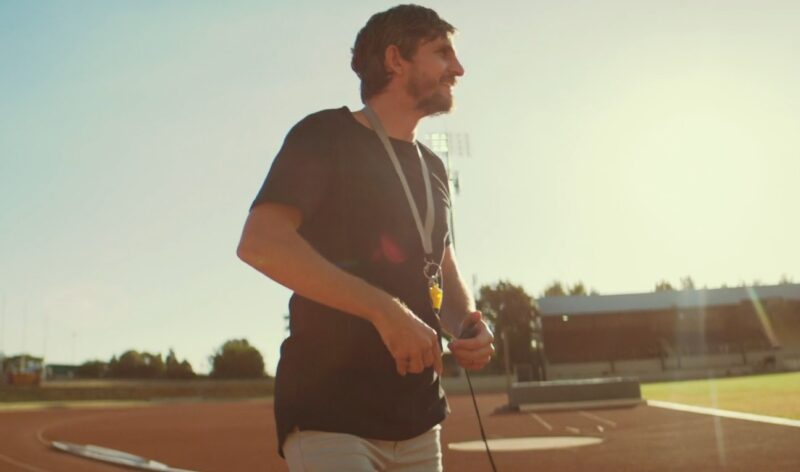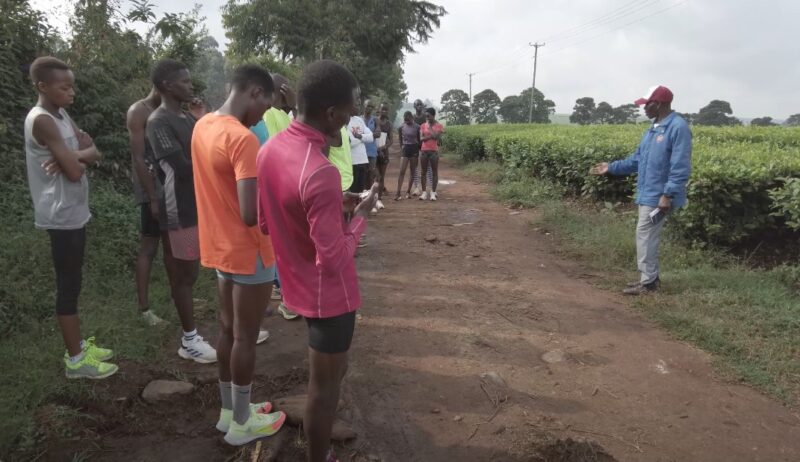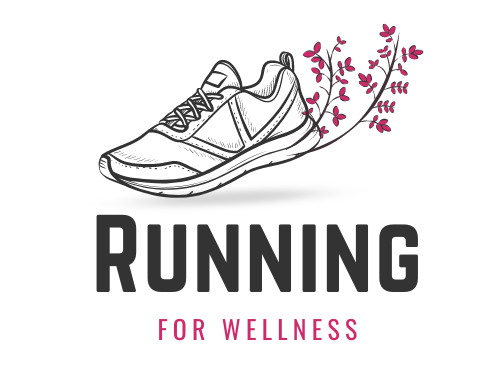Becoming a running coach offers a unique opportunity to turn your passion for running into a fulfilling career. It’s a path that combines knowledge, experience, and the ability to guide others toward their fitness goals.
However, launching a career as a running coach requires more than just a love for running. You’ll need to gain the right certifications, develop a coaching philosophy, and build a client base.
In this article, we’ll explore the steps needed to establish yourself as a successful running coach.
Table of Contents
ToggleSteps to Become a Running Coach
- Get running experience.
- Earn a coaching certification.
- Define your coaching style.
- Start coaching clients.
- Set pricing.
- Build your online presence.
- Keep learning.
1. Get Running Experience

Before stepping into a coaching role, it’s critical to build substantial experience as a runner. This experience should be extensive and varied, allowing you to truly understand the physical and mental challenges that runners face. Ideally, this involves at least 3 to 5 years of consistent training, participating in races, experimenting with different running techniques, and understanding how to push through plateaus and injuries.
Why Is Experience Important?
Clients trust coaches who have lived the challenges of running themselves. Your experience equips you with the knowledge of proper running form, pacing, endurance building, and dealing with common issues like overtraining or burnout. Moreover, it allows you to connect on a deeper level with your clients because you’ve been through the same struggles and successes they aim to achieve.
- Training Consistency: Experience is built through consistent training. Running year-round and adapting to different weather conditions and terrains are part of the learning process.
- Understanding Injuries: Dealing with common injuries like shin splints or runner’s knee and knowing how to recover quickly is crucial.
- Adapting Techniques: Learn the different running techniques—how to improve cadence, adjust stride length, and use efficient arm movements.
- Race Experience: Competing in races of various distances teaches you about strategy, pacing, and handling pre-race nerves.
How Much Time Is Needed?
On average, building a credible running background takes around 3 to 5 years of regular training, which includes:
- Training at least 3 to 5 times per week.
- Participating in multiple races each year (e.g., 5Ks, 10Ks, half marathons).
- Experimenting with different training plans, such as interval training, tempo runs, and long slow distance runs.
This depth of experience ensures you have a wide knowledge base, from injury prevention to nutrition strategies.
Examples of Runners Who Transitioned to Coaching
Famous coaches like Alberto Salazar and Jack Daniels have extensive running backgrounds, having competed at high levels before turning to coaching. They draw on decades of experience in the sport to guide athletes, making their training programs credible and effective.
2. Earn a Coaching Certification

Getting certified as a running coach is a critical step in establishing credibility and ensuring you have the foundational knowledge needed to train others effectively. Certification programs provide in-depth education on various aspects of running, from biomechanics and training plans to injury prevention and sports psychology.
Popular Certification Programs
- Road Runners Club of America (RRCA): The RRCA is one of the most recognized certifications in the U.S. It offers Level 1 and Level 2 certifications, covering everything from training principles to coaching ethics. The Level 1 course is available both online and in-person, lasting two days, with a fee of around $335. This program is perfect for those focusing on distance running for all experience levels.
- United Endurance Sports Coaching Academy (UESCA): UESCA offers a fully online program designed for endurance sports coaches. The course consists of 22 modules covering running biomechanics, nutrition, injury management, and even marketing strategies for your coaching business. The fee is $499, but discounts are often available.
- USA Track & Field (USATF): This certification is ideal if you’re interested in coaching competitive track athletes. The Level 1 course is a 21.5-hour program that can be completed online or in-person. It’s structured to cover the basics of event-specific coaching, sports science, and safety. The course costs around $210.
- U.S. Track & Field and Cross Country Coaches Association (USTFCCCA): If you’re interested in specializing in specific events like sprints or distance running, USTFCCCA offers a range of focused certifications. Most courses are around $200, with advanced courses requiring in-person attendance.
Key Areas Covered in Certification Programs
- Biomechanics and Physiology: Understanding how the body moves during running and the science behind effective training plans.
- Training Principles: Learning how to design programs that balance intensity, volume, and recovery to achieve peak performance.
- Injury Prevention and Management: Recognizing early signs of common running injuries and knowing how to manage them.
- Coaching Psychology: Techniques to motivate different types of runners, from beginners to competitive athletes.
- Nutrition for Runners: Guidelines on fueling for training, recovery, and races.
How Long Does It Take?
Most basic certifications can be completed in a weekend (2 days) or over several weeks if done online at your own pace. Advanced certifications might take longer, with more in-depth coursework and practical components. On average, the process from start to finish takes anywhere from a few weeks to a couple of months, depending on your availability and chosen program.
3. Define Your Coaching Style

Your coaching style and philosophy are what set you apart from other running coaches. This involves deciding on the specific type of runners you want to train and the approach you’ll take in guiding them toward their goals. Specializing in a particular area early on helps you stand out and makes your marketing more targeted.
Choose Your Niche
- Beginners: Focus on people who are new to running and want to build a solid foundation. This often includes couch-to-5K programs and personalized training for those just starting.
- Intermediate Runners: Specialize in helping runners improve their times or train for longer distances like half-marathons or marathons.
- Competitive Athletes: Work with advanced runners aiming for personal bests, Boston Marathon qualifiers, or even elite-level competitions.
- Specialty Areas: Some coaches focus on trail running, ultra-marathons, or even specific groups like masters athletes (40+ years old). Your niche should align with both your experience and passion.
Establish Your Coaching Philosophy
Your philosophy should reflect your core beliefs and guide how you interact with clients. Some coaches emphasize a science-based approach, focusing heavily on data, metrics, and structured plans. Others might prioritize mental resilience, goal-setting, or holistic well-being, addressing aspects like sleep, stress management, and nutrition.
Ask yourself questions like:
- Do I believe in high-mileage training or minimalistic approaches?
- Will my plans focus more on gradual progression or quick improvements?
- How will I balance performance goals with overall runner well-being?
4. Start Coaching Clients

Once you have the experience and certification, the next critical step is to start coaching clients. This is where theory meets practice, and you begin applying your knowledge in real-world scenarios. Here’s how to go about it:
Start with a Few Clients (Even for Free)
In the beginning, it’s beneficial to coach a few clients either for free or at a discounted rate. This gives you the chance to refine your coaching approach and gather testimonials. These early experiences are crucial for understanding different runner needs and learning how to adapt your programs effectively. For instance, you might work with a beginner who struggles with motivation or an intermediate runner looking to improve race times.
Tools and Platforms to Use
For delivering training plans and tracking progress, you can start with basic tools like Google Sheets or Excel. As you grow, you might move to specialized coaching platforms like TrainingPeaks or FinalSurge. These platforms allow you to manage multiple clients, track performance data, and communicate efficiently.
Communication and Feedback

Communication is key to successful coaching. Whether through email, phone, or in-person sessions, you must maintain regular contact with your clients to monitor their progress and adjust their training plans. Also, gather feedback frequently. It’s essential to know how clients are responding to the training, both physically and mentally.
Programs for Individual Needs
Each runner has unique strengths, weaknesses, and goals. You’ll need to develop tailored programs that cater to their specific needs. For example:
- Beginners may need more guidance on form and pacing with a gradual build-up in distance.
- Intermediate runners might benefit from speed work and structured intervals to break personal records.
- Advanced runners require specialized plans focusing on peaking at the right time and managing recovery effectively.
Set Pricing
Once you’ve gained experience coaching and have your systems in place, the next step is to determine how much to charge for your services. Pricing is a crucial factor that can influence your ability to attract clients while ensuring your coaching business remains profitable.
5. Research Market Rates

Start by researching what other running coaches in your area or niche are charging. Prices typically vary based on the coach’s experience, reputation, and the level of service provided. For example:
- Basic online coaching plans can range from $50 to $100 per month.
- More personalized plans with frequent communication and adjustments usually range from $150 to $300 per month.
- Top-tier coaching packages, which include strength training, nutrition guidance, and ongoing support, can exceed $400 per month.
Consider Your Level of Experience
If you’re just starting out, it might make sense to charge on the lower end of the spectrum. Offering lower rates initially allows you to build your client base and gain testimonials. As you gain more experience and build a reputation, you can gradually increase your rates.
Pricing Models
There are different pricing models to consider:
- Monthly Plans: This is the most common model, where clients pay a flat fee each month. It’s straightforward and allows you to predict your monthly income.
- Per Session: Some coaches prefer charging per session, which is ideal for clients seeking one-off consultations or occasional guidance.
- Package Deals: Offering multi-month packages at a discounted rate can be attractive to clients who are committed to long-term training.
6. Build Your Online Presence

To attract clients and establish credibility, having a strong online presence is essential. This includes creating a website, using social media strategically, and optimizing your content to reach your target audience.
Create a Professional Website
Your website is the hub of your online presence. It should be simple yet professional, highlighting your services, credentials, and experience.
- About Page: Share your coaching philosophy, background, and what makes your approach unique.
- Services: Clearly outline your coaching packages, pricing, and what clients can expect.
- Testimonials: Display feedback from satisfied clients to build trust with potential customers.
- Contact Information: Make it easy for visitors to reach out, whether through email, a contact form, or social media links.
If you’re just starting, a basic WordPress site with these essential pages is sufficient. As you grow, consider adding a blog to share tips, training plans, or client success stories.
Use Social Media
Social media is a powerful tool to connect with potential clients and showcase your expertise. Platforms like Instagram, Facebook, and LinkedIn allow you to:
- Share Tips and Advice: Post content that’s relevant to your target audience, such as running tips, motivational posts, and training strategies.
- Engage with the Community: Participate in running groups, comment on posts, and answer questions. Engaging with your community helps build relationships and positions you as a knowledgeable coach.
- Use Relevant Hashtags: Use hashtags like #runningcoach, #marathontraining, or #5ktraining to increase visibility and reach a broader audience.
7. Keep Learning

To be a successful running coach, continuous learning is essential. The world of sports science, nutrition, and training techniques is always evolving, and staying updated ensures that your coaching methods remain effective and relevant.
Expand Your Knowledge
After obtaining your initial certification, dive deeper into advanced topics like biomechanics, sports psychology, and nutrition. Consider pursuing additional certifications or attending workshops and seminars that focus on these areas. For example, if you primarily coach distance runners, learning more about injury prevention and recovery techniques specific to long-distance training can be invaluable.
Read Books and Research Articles
Books written by renowned running coaches and sports scientists are excellent resources for staying informed. Some highly recommended reads include:
- “80/20 Running” by Matt Fitzgerald: Focuses on the importance of balancing high-intensity and low-intensity training.
- “Running Rewired” by Jay Dicharry: Offers insights into improving running form and preventing injuries.
- “Brain Training for Runners” by Matt Fitzgerald: Combines mental conditioning with physical training to boost performance.
Staying up-to-date with research articles from sports science journals also helps you incorporate the latest evidence-based practices into your coaching.
Engage in Peer Learning
Joining online forums, attending industry conferences, and connecting with other coaches are great ways to learn from the experiences of others. Engaging in discussions with fellow coaches allows you to exchange ideas, troubleshoot challenges, and discover new approaches to training.
Practice What You Preach

Continuing to run and experiment with new training techniques yourself helps you stay in tune with the runner’s experience. Whether it’s trying out different interval training methods or experimenting with various nutrition strategies, firsthand experience makes you a better coach.
Adapt to New Trends
The fitness industry is dynamic, with new trends and technologies constantly emerging. For instance, the rise of wearable technology has made it easier for coaches to track and analyze runner performance. Stay informed about these advancements and consider integrating them into your coaching practice.
Attend Continuing Education Courses
Many certification bodies, such as the RRCA and USATF, offer continuing education courses. These programs often focus on specialized areas like strength training for runners, race-day strategies, or coaching specific age groups. These courses not only enhance your knowledge but also add credibility to your coaching profile.
FAQs
Conclusion
Building a career as a running coach requires dedication, knowledge, and practical experience. From gaining running expertise and earning the right certification to defining your coaching style and marketing your services, each step is crucial for establishing yourself in this field.
Related Posts:
- 25 Simple Running Motivation Tips To Get You Moving
- Top 400 Hilarious Gym Quotes to Keep You Motivated
- How Far Is a Half Marathon? Everything You Need to Know
- How Long Does It Take to Train for a Half Marathon?
- Running Coach Salary - How Much Do They Really Make?
- Half Marathon Training Plan for Beginners - Simple…







